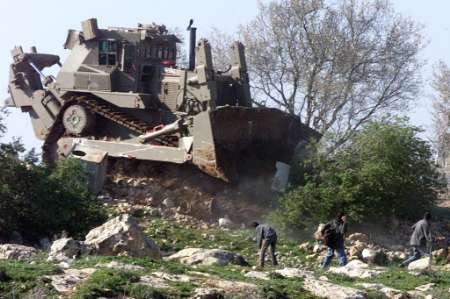The report by Natal, the Israel Trauma Centre for Victims of Terror and War, comes after the town first came under Palestinian militant rocket fire from the Gaza Strip in 2001. In the last two years the number of projectiles has risen significantly, and in recent months rocket fire has become an almost daily event.
The Natal report, based on a representative survey, indicates that some 28 percent of adults suffer from post-traumatic stress disorder. It suggests that the biggest impact was on the young, who suffer nightmares, loss of appetite and problems at school.
Some 120 children are currently undergoing long-term mental health therapy.
This is not surprising, say experts, given that many times the rocket fire is timed for the early morning when children head to school.
Red Colour system
During a visit by IRIN to the town on a school day, over 10 rockets landed in or near the city between 7am and 8.30am. Every time rockets triggered the warning siren - the now infamous `Tseva Adom' or `Red Colour' system - children ran for cover.
The system is only partially effective. One resident said the siren gives people between zero and 15 seconds to find cover - "and most of the time it's closer to zero".
Shlomi Argon, in his mid-30's and a Sderot resident, has a gaping hole in his roof, where a rocket landed earlier in the month, injuring his wife and the neighbour's child who had a play-date with his four-year-old son Nir.
“It's like Russian Roulette”
"It's like Russian Roulette. You know that eventually a rocket will land on your house," he said, looking away from the sunshine coming through his roof.
Before the Oslo Accords of the 1990s he worked with Palestinians from Khan Younis, in Gaza, in agricultural fields. He still maintains contact with them. "We speak almost every day. They feel very sorry for what happened," Shlomi said, adding that he too was distraught over the bloodshed in Gaza.
A high school student told IRIN that her family had not slept in their bedrooms for six months.
"We all sleep in one room on the bottom floor, which is considered safe," the teenager said, adding: "Some days my mum begs my dad to leave this place… To go anywhere where we can walk to school without fearing Qassams [Palestinian rockets]."
"People who can afford to, have moved out of the city, but my family can't," said Shayli, a 17-year-old. She said her mother tried to keep her inside the house as much as possible.
"This is taking a huge toll on our lives," she said, noting that she could no longer remember when the security situation was better.
Dalia Yossef, the manager of a local branch of a national organisation for trauma intervention, Hosen, said the challenge in treating the children was that the rockets continued to fall.
"It's ongoing, there is no 'post'. How do you treat post-trauma in this situation?" she asked.
Officially Sderot’s population is 23,000 but in reality about 14,000 live there, as many have left and many people are registered as living there but do not for tax reasons.
IRIN, the humanitarian news and analysis service of the UN Office for the Coordination of Humanitarian Affairs.

Nessun commento:
Posta un commento